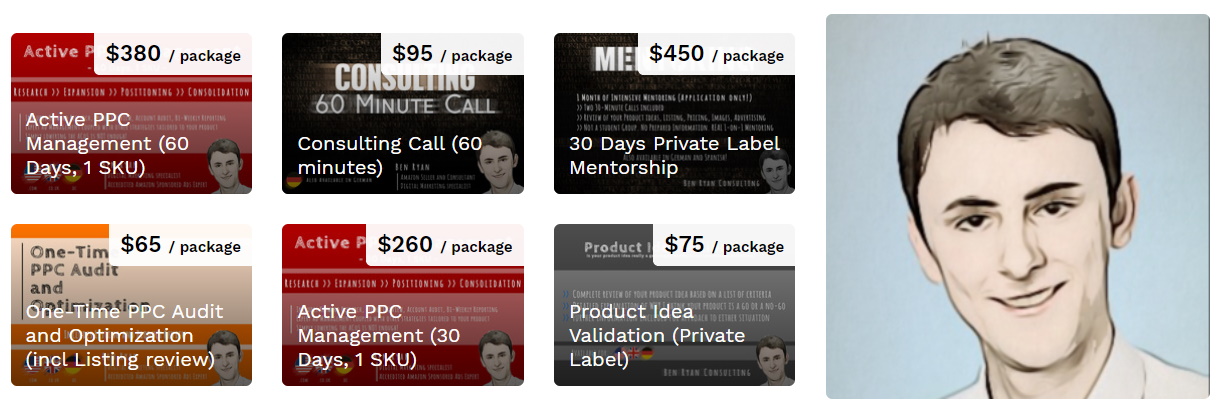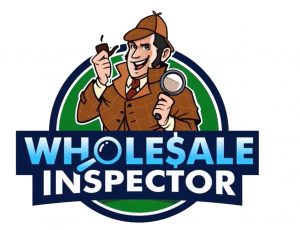
fba.cafe blog – create your future
The top 5 common ppc mistakes
More and more sellers on Amazon use PPC (Pay per Click) to launch their product or sell more of their products online. We asked PPC specialist Ben Ryan, one of the top sellers on the JungleScout Marketplace, to shine some light on the most common mistakes sellers make with PPC. He consults sellers on PPC and is very successful in doing so. If you want to see his reviews, check his JungleScout Marketplace profile by clicking here. Find his advice on PPC below and avoid these mistakes!
1. Making decisions too early
Lowering the bid or eliminating a keyword might often be tempting when it has accumulated clicks, spent advertising dollars and not yielded the expected return.
However, you have to keep in mind that PPC is only one piece of the puzzle when it comes to converting a prospect to a buyer. After the prospect saw your ad and clicked on it, your listing has to take over and convert him into a buyer. So a sale attributed to PPC not only depends on the keywords that you target. You also have to factor in your listing’s conversion rate when you make a decision on a keyword.
If your average conversion rate is 10% then you need 10 clicks on average before one click converts to a sale. So it does not make any sense to make a decision on a keyword before it has accumulated at least 10 clicks. If you eliminate a keyword with 7 clicks because it hasn’t made any sales, then you might have eliminated an important keyword that could potentially have converted on the 10th click.
2. Not having enough patience
Patience is really a virtue when it comes to managing PPC campaigns. It is important to understand that PPC is a feedback loop:
You make a change to your campaigns ‐‐> you wait to see how the campaign metrics react with the change that you implemented ‐‐> you evaluate the results and use the new data to make new changes or undo the change that you made in the previous step.
It is crucial to consider three things when evaluating data after a change:
a) Statistical significance (as explained above in (1.))
b) Data delay
There’s a delay for PPC Ads data of “officially” up to 48 hours (I made the experience that it can sometimes be as much as 72 hours). However, the delay affects different metrics differently. For example, the impressions you received on a keyword might show up instantly. The clicks might show up an hour after they happened. And the sale might show up 30 hours after the click that is responsible for that sale. It’s important that you keep that in mind, otherwise, you can make wrong decisions based on incomplete data.
c) Attribution window
A sale is attributed to a PPC click when it happens within 7 days of that click. In other words, when a customer clicks on your ad today but he only bookmarks your listing and then goes back to buy your product 6 days later, then that sale is attributed to that PPC click on the keyword that he used to find your product.
Of course, it is not really feasible to wait for 10 days (data delay + attribution window) before you make any decision on a keyword. What I found to be working well is to wait with a decision before I reach the threshold of clicks based on my listing’s conversion rate. Then, after 7 days, I revisit the change I made to see if because of the data delay or the attribution window the data changed from what I saw at the moment I implemented the change.
3. Not focusing first on the listing
The listing is one of the most common reasons for poorly performing PPC campaigns. Sellers often focus too much on their PPC campaigns, the individual bids, the keywords, the search terms, etc., and they forget that in the end, it is the listing that is responsible for converting the prospect to a buyer.
The listing’s conversion rate essentially determines how many clicks you need to purchase before you get one sale from PPC. So the difference between an 8% and a 16% conversion rate is enormous. Even though the absolute change is “only” 8%, the doubled conversion rate technically leads to the ACoS split in half if all other things remain equal. That is how important the conversion rate is. Far too many sellers don’t even know their conversion rate. Make sure you know your numbers. How high is your profit per unit (that’s the amount you can invest in PPC per sale in order to break even)? How much are you paying per click on average? How many clicks do you need on average for a sale?
If the result is that you need 20 clicks and you pay 1.50$ per click and your profit per unit is 5$, then your main problem is somewhere else – outside of the campaign manager.
4. Not having a clear advertising objective
Are you using PPC to get more sales in addition to your organic sales? Or to improve your keyword ranking on the keywords that you target? Or to increase brand visibility? Or to do market research?
It is extremely important to define a clear advertising objective before you even start to set up any PPC campaigns. Depending on the objective the approach and the campaign structure can be completely different, as well as the decisions you have to make when you optimize your campaigns.
5. Not looking at the big picture
Too many sellers determine PPC performance solely by looking at the ACoS, which compares ad spend vs ad sales. However, if done right, your PPC results should also have an impact on your organic sales. The sales you make on the keywords that you target with PPC should improve your listing’s position on those keywords. Eventually, that should lead to an increase in organic sales by virtue of the higher keyword ranking. Those additional organic sales can be indirectly attributed to your PPC campaigns.
An important metric to measure the overall performance of your advertising is the ACoTS (Advertising Cost of Total Sales) or TACOS (total advertising cost of sales). Rather than comparing the ad spend against the ad sales, this metric compares the ad spend against the total sales that your product made (including organic sales). The TACoS is far more important than the ACoS.
Sometimes it is necessary to run a higher ACoS in order to improve organic ranking and consequently organic sales, which then leads to a lower TACoS. So even though your campaigns are running at a higher ACoS than before, they can be more profitable than before if you look at the big picture.







